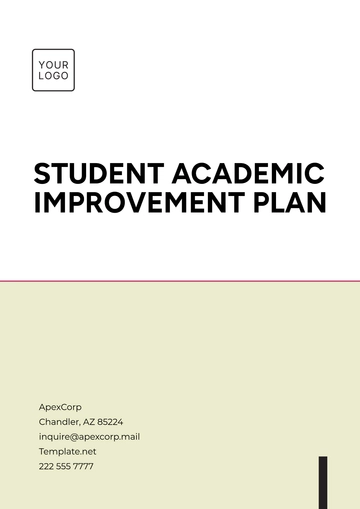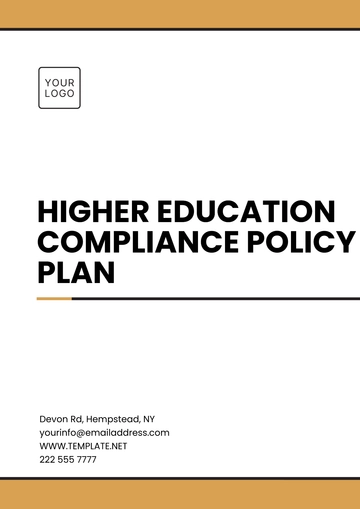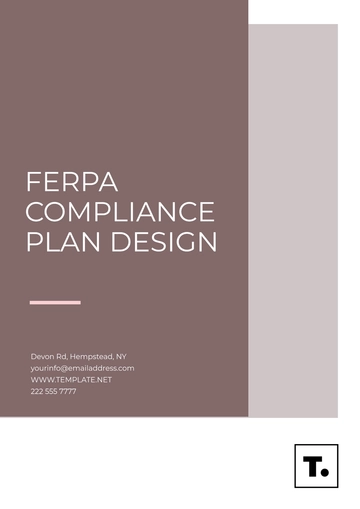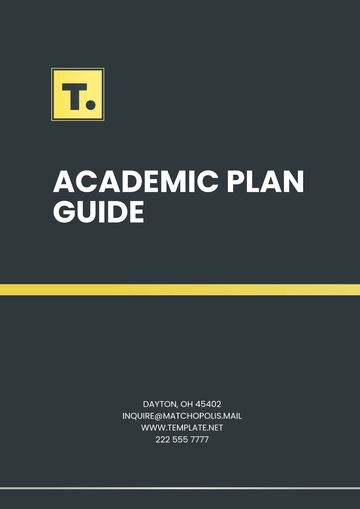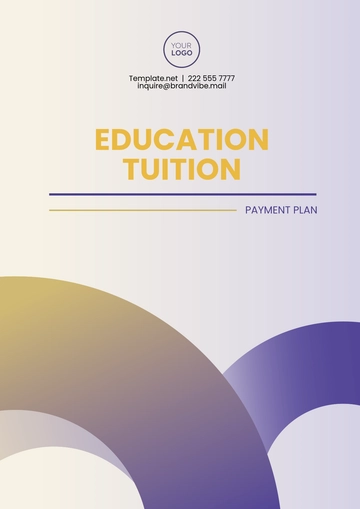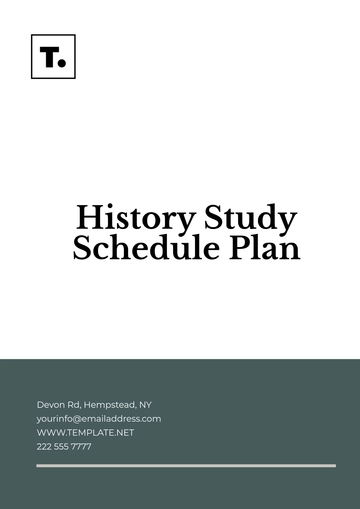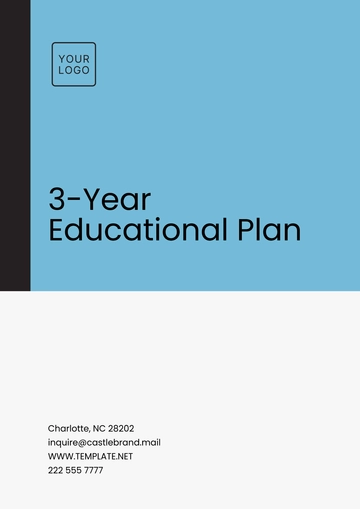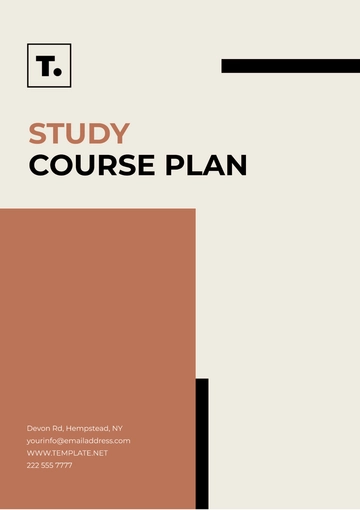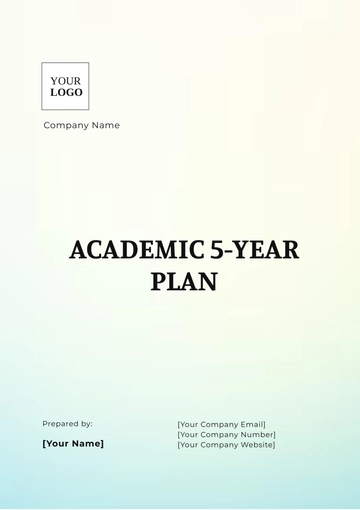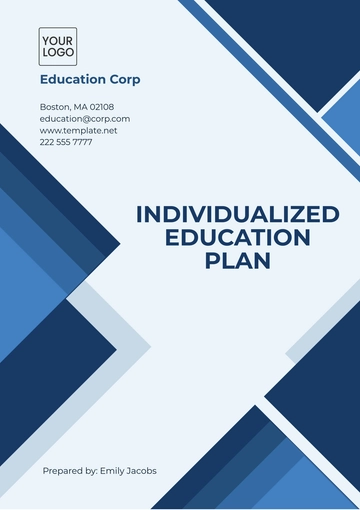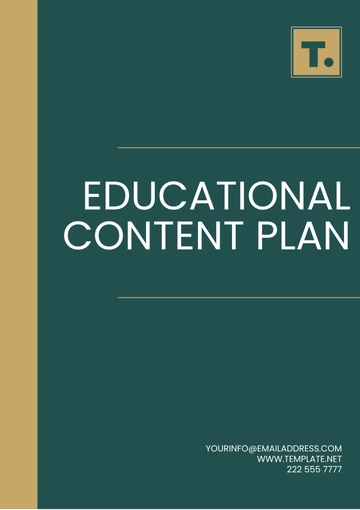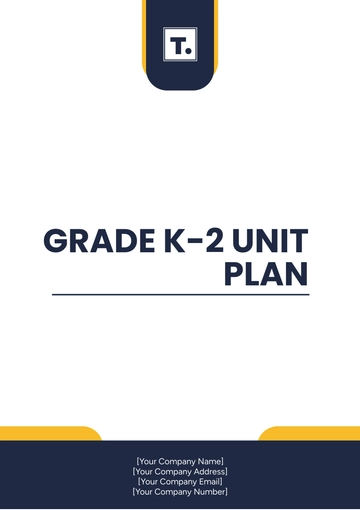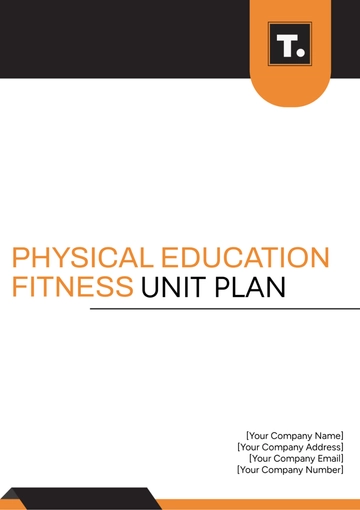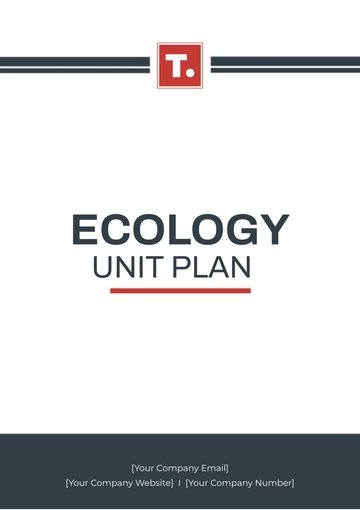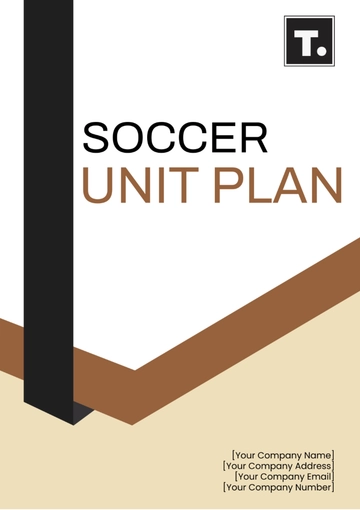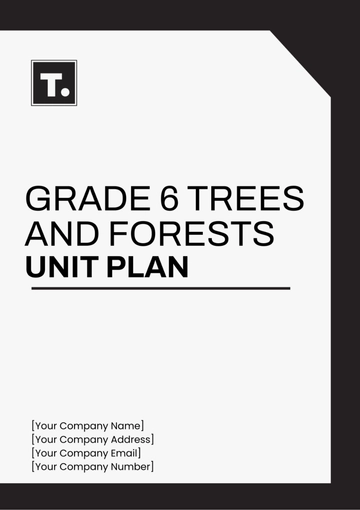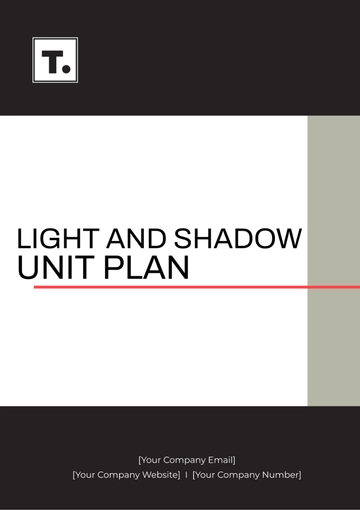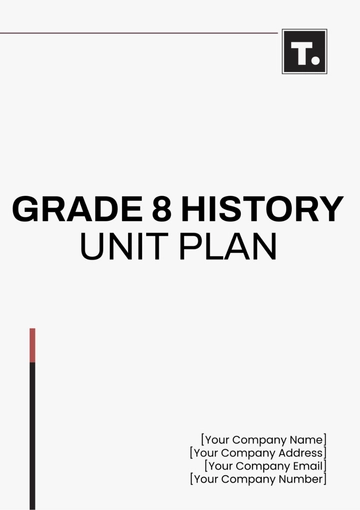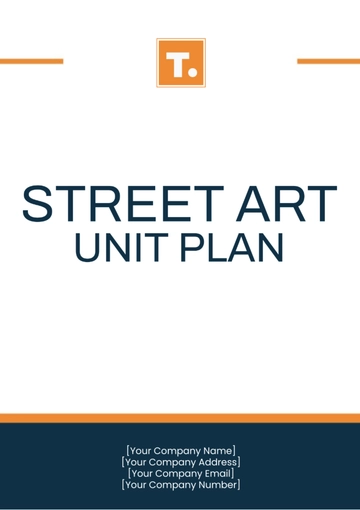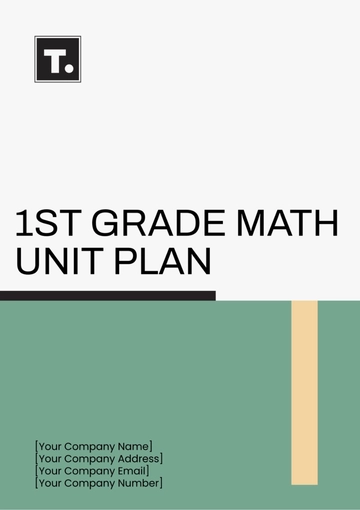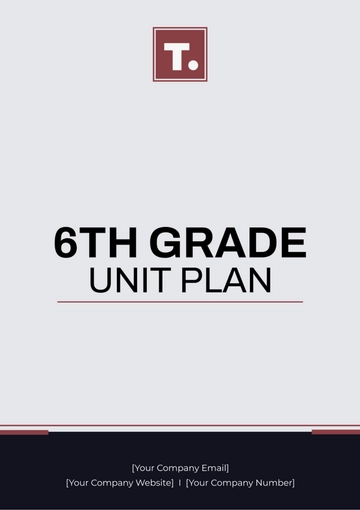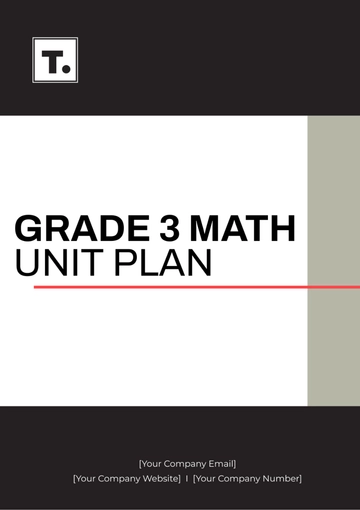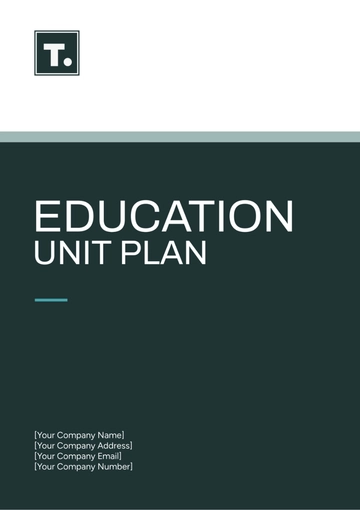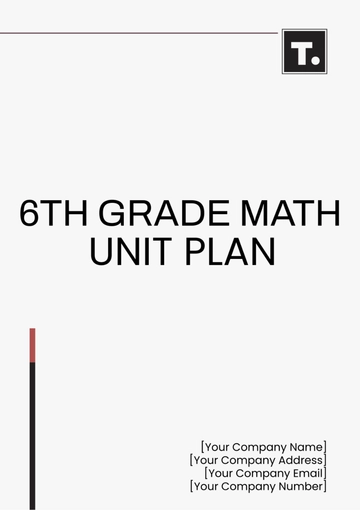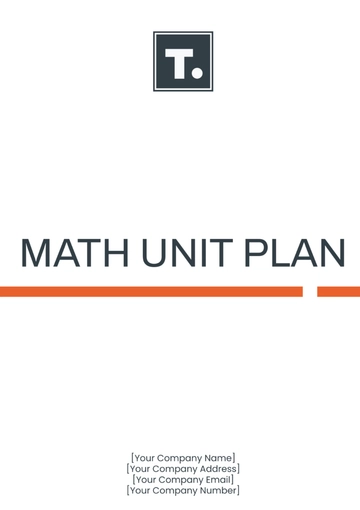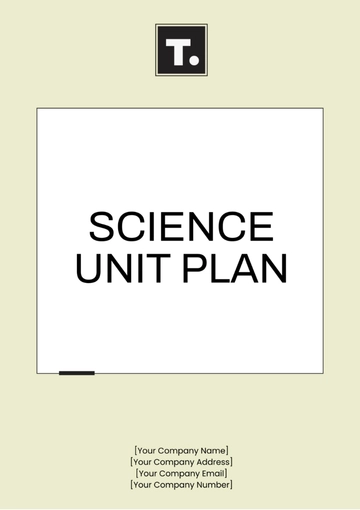Free Education Unit Plan
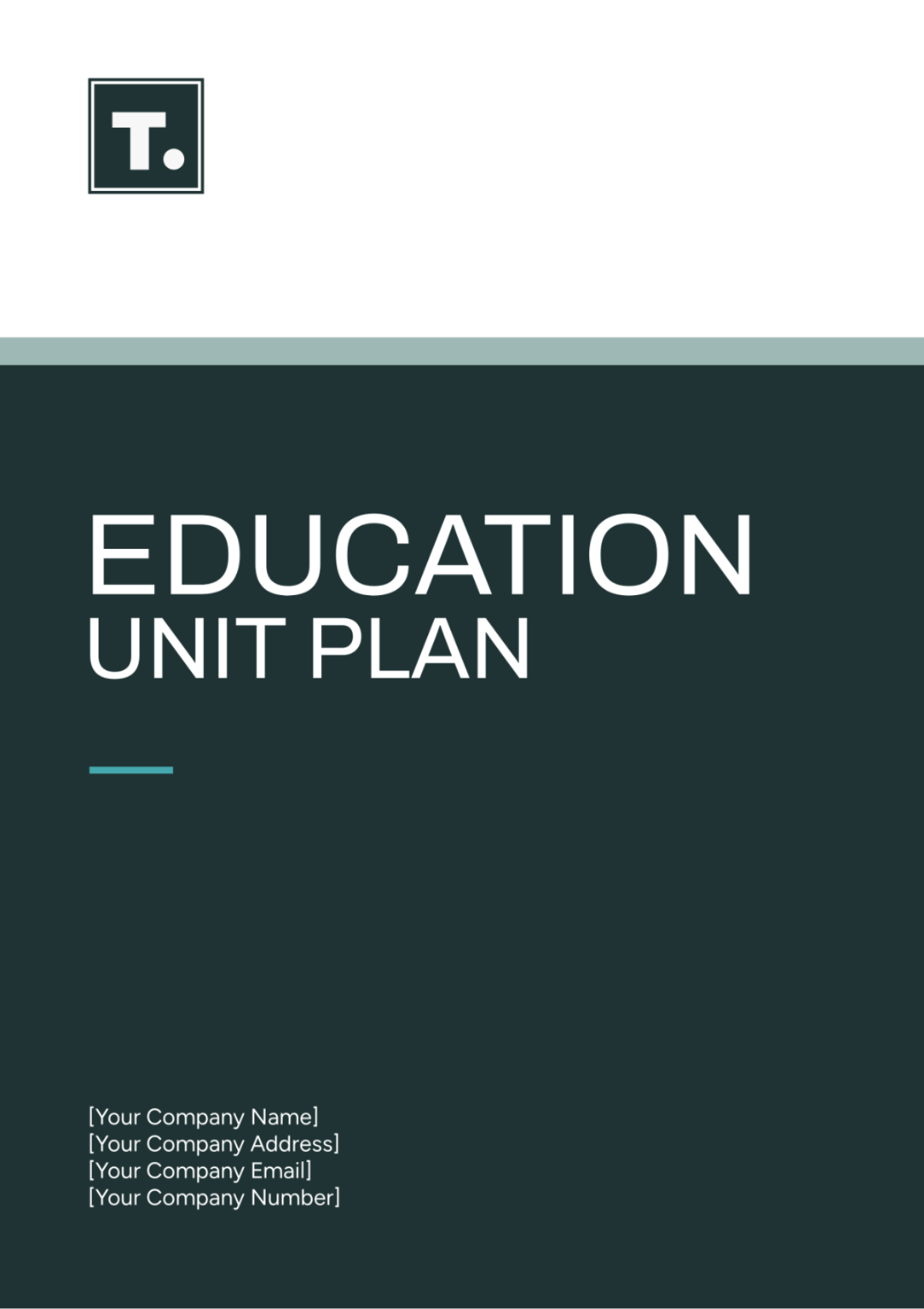
I. Overview
In this unit, educators will embark on an immersive journey to equip themselves with the necessary tools and strategies for orchestrating a seamless transition into a new school term or academic year. From meticulously planning curriculum objectives to creating a vibrant and welcoming classroom environment, participants will engage in hands-on activities and reflective exercises to cultivate a robust foundation for a successful academic year ahead.
II. Learning Objectives
Understand the significance of meticulous planning and preparation in setting the stage for a productive academic year.
Develop proficiency in crafting curriculum maps and aligning instructional goals with national and state educational standards.
Explore innovative techniques for optimizing classroom layout and organizing instructional materials to enhance student engagement and accessibility.
Acquire strategies for establishing and reinforcing effective classroom routines and procedures to foster a conducive learning atmosphere.
Engage in introspective reflection to refine personal teaching philosophies and set actionable goals for professional growth.
III. Standards Alignment
This unit aligns with the following educational standards:
Common Core State Standards (CCSS)
National Curriculum Standards (NCS)
State-specific educational frameworks
IV. Materials and Resources
Curriculum guides tailored to specific grade levels and subjects.
Interactive digital platforms for curriculum mapping and instructional planning.
Classroom setup kits including furniture arrangements, storage solutions, and decorative elements.
Exemplar lesson plans and instructional resources curated for diverse learners.
Professional development webinars and workshops focused on pedagogical best practices.
V. Instructional Strategies
Facilitated group discussions on the critical role of preparation in academic success.
Interactive workshops with expert educators demonstrating effective curriculum mapping techniques.
Collaborative brainstorming sessions to devise innovative classroom layout designs.
Peer mentoring opportunities for sharing practical tips and strategies for implementing classroom routines.
Simulation exercises to practice managing classroom transitions and addressing common challenges.
VI. Assessment Methods
Formative assessments utilizing pre- and post-unit surveys to gauge knowledge acquisition and skill development.
Peer evaluations of classroom setup and organization using rubrics based on established criteria.
Written reflections and goal-setting exercises to assess personal growth and professional development.
Classroom observation checklists to evaluate the implementation of established routines and procedures.
Culminating reflection essays analyzing the effectiveness of preparation strategies and outlining actionable steps for improvement.
VII. Schedule and Timeline
Week | Focus | Activities |
|---|---|---|
Week 1 | Understanding the Foundations of Effective Preparation |
|
Week 2 | Crafting Curriculum Maps and Instructional Objectives |
|
Week 3 | Designing Dynamic Classroom Environments |
|
Week 4 | Cultivating Consistent Classroom Routines |
|
Week 5 | Reflective Practice and Goal Setting |
|
VIII. Differentiation Strategies
Providing customizable curriculum templates and planning guides to accommodate diverse teaching styles and subject areas.
Offering tiered support options for educators at different proficiency levels in curriculum mapping and instructional planning.
Incorporating visual aids and multimedia resources to cater to diverse learning preferences.
Facilitating peer collaboration and support networks to encourage knowledge sharing and skill development.
Offering supplementary resources and extension activities for educators seeking additional challenges or enrichment opportunities.
IX. Reflection and Evaluation
At the conclusion of the unit, educators will engage in a comprehensive self-assessment and evaluation process to reflect on their learning journey and growth throughout the unit. They will have the opportunity to revisit their initial goals, assess their progress, and identify areas for further refinement and development. Additionally, participants will be invited to provide feedback on the unit structure, content, and delivery to inform future iterations and ensure ongoing improvement and relevance.
- 100% Customizable, free editor
- Access 1 Million+ Templates, photo’s & graphics
- Download or share as a template
- Click and replace photos, graphics, text, backgrounds
- Resize, crop, AI write & more
- Access advanced editor
Simplify lesson planning with Template.net’s Education Unit Plan Template. This customizable and editable template streamlines your workflow, making it easy to create comprehensive unit plans. Editable in our Ai Editor Tool, you can personalize every aspect to fit your classroom requirements perfectly.
You may also like
- Finance Plan
- Construction Plan
- Sales Plan
- Development Plan
- Career Plan
- Budget Plan
- HR Plan
- Education Plan
- Transition Plan
- Work Plan
- Training Plan
- Communication Plan
- Operation Plan
- Health And Safety Plan
- Strategy Plan
- Professional Development Plan
- Advertising Plan
- Risk Management Plan
- Restaurant Plan
- School Plan
- Nursing Home Patient Care Plan
- Nursing Care Plan
- Plan Event
- Startup Plan
- Social Media Plan
- Staffing Plan
- Annual Plan
- Content Plan
- Payment Plan
- Implementation Plan
- Hotel Plan
- Workout Plan
- Accounting Plan
- Campaign Plan
- Essay Plan
- 30 60 90 Day Plan
- Research Plan
- Recruitment Plan
- 90 Day Plan
- Quarterly Plan
- Emergency Plan
- 5 Year Plan
- Gym Plan
- Personal Plan
- IT and Software Plan
- Treatment Plan
- Real Estate Plan
- Law Firm Plan
- Healthcare Plan
- Improvement Plan
- Media Plan
- 5 Year Business Plan
- Learning Plan
- Marketing Campaign Plan
- Travel Agency Plan
- Cleaning Services Plan
- Interior Design Plan
- Performance Plan
- PR Plan
- Birth Plan
- Life Plan
- SEO Plan
- Disaster Recovery Plan
- Continuity Plan
- Launch Plan
- Legal Plan
- Behavior Plan
- Performance Improvement Plan
- Salon Plan
- Security Plan
- Security Management Plan
- Employee Development Plan
- Quality Plan
- Service Improvement Plan
- Growth Plan
- Incident Response Plan
- Basketball Plan
- Emergency Action Plan
- Product Launch Plan
- Spa Plan
- Employee Training Plan
- Data Analysis Plan
- Employee Action Plan
- Territory Plan
- Audit Plan
- Classroom Plan
- Activity Plan
- Parenting Plan
- Care Plan
- Project Execution Plan
- Exercise Plan
- Internship Plan
- Software Development Plan
- Continuous Improvement Plan
- Leave Plan
- 90 Day Sales Plan
- Advertising Agency Plan
- Employee Transition Plan
- Smart Action Plan
- Workplace Safety Plan
- Behavior Change Plan
- Contingency Plan
- Continuity of Operations Plan
- Health Plan
- Quality Control Plan
- Self Plan
- Sports Development Plan
- Change Management Plan
- Ecommerce Plan
- Personal Financial Plan
- Process Improvement Plan
- 30-60-90 Day Sales Plan
- Crisis Management Plan
- Engagement Plan
- Execution Plan
- Pandemic Plan
- Quality Assurance Plan
- Service Continuity Plan
- Agile Project Plan
- Fundraising Plan
- Job Transition Plan
- Asset Maintenance Plan
- Maintenance Plan
- Software Test Plan
- Staff Training and Development Plan
- 3 Year Plan
- Brand Activation Plan
- Release Plan
- Resource Plan
- Risk Mitigation Plan
- Teacher Plan
- 30 60 90 Day Plan for New Manager
- Food Safety Plan
- Food Truck Plan
- Hiring Plan
- Quality Management Plan
- Wellness Plan
- Behavior Intervention Plan
- Bonus Plan
- Investment Plan
- Maternity Leave Plan
- Pandemic Response Plan
- Succession Planning
- Coaching Plan
- Configuration Management Plan
- Remote Work Plan
- Self Care Plan
- Teaching Plan
- 100-Day Plan
- HACCP Plan
- Student Plan
- Sustainability Plan
- 30 60 90 Day Plan for Interview
- Access Plan
- Site Specific Safety Plan
